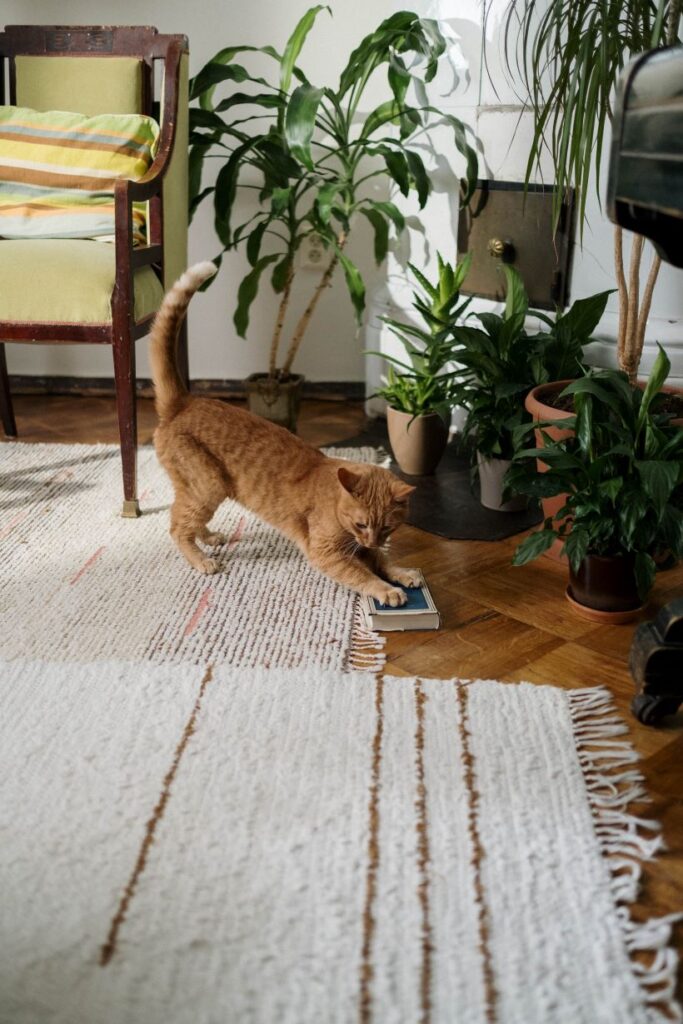Our morning routine can be a key moment to implement some biophilic design principles to get us on a good start of the day.
In the modern world, our homes have become less and less connected to nature. Most people spend the majority of their day indoors, which can cause stress and make it difficult to relax. But what if there was a way to create an environment that made you feel more at home? And what if we could make some simple tweaks to our morning routines to enhance this?
Biophilic design is a growing trend in interior design that seeks to bring nature into your living space. Biophilic design focuses on creating spaces that are rich in nature’s elements such as plants, water, and light—and so much more. By incorporating these elements into your home, you can create an environment that helps you feel more relaxed and focused while also reducing stress levels. So let’s start with simple straightforward actions you can take now AND immediately by simply tweaking some parts into your morning routine.
Take a look at some of my biophilic design tips that I implement every morning, they are game changers to set the tone of the day:
- 1. Light is an important feature of biophilic design the closer we live in alignment to our circadian rhythms the better we will feel. The top on the list is to let as much natural light in as possible. But you may be thinking … hang on , I can’t just throw down my main walls and insert new windows .. well maybe yes but that is not exactly a small adjustment 🤔 So lets start with opening the curtains AND keeping the windows clean.!!This may seem a small thing, but when we get used to these tiny gestures it really makes a difference
Also According to Andrew Huberman , the neuroscientist of Stanford University “Getting sunlight in your eyes first thing in the morning is absolutely vital to mental and physical health. It is perhaps the most important thing that any and all of us can and should do in order to promote metabolic well-being, promote the positive function of your hormone system, get your mental health steering in the right direction.
- 2. Following from point one, as a good morning habit that also follows the biophilic principles – let the air flow. So while you are opening the curtains , why don’t you throw open the windows and let the air circulate and change – of course in winter this time span is limited This morning here was -4 Celcius, definitely a bit chilly to keep the windows open for hours!

let the natural light in and the air flow
- 3. Use natural organic materials where possible. Personally I find nothing more luxurious than sleeping on Linen sheets. Fortunately, I have inherited so many that I am able to do so on a regular basis. If you don’t have Linen sheets don’t beat yourself up about it, there are plenty of nice 100% organic cotton home textiles and some also with beautiful nature prints.
- 4. Before you start your hectic day, instead of turning on the news, why don’t you create a more relaxing background sound, birds chipping the sound of waves…check out the nature sound app. I try and keep these on while a do my short yoga sessions in the morning…. It really sets me up for a positive day. link

Natural light, airflow, nature sounds to set a tone for the day
- Of course I could not forget plants, they are the easiest and most immediate way of introducing biophilic elements into your space. If possible put them in a place where you can see them and establish a relationship with them. To really get the most benefit from plants we do need to take care of them that is speak to them and LISTEN to them.

never forget plants and…. pets
To learn more about the power of plants I really advise you to listen to my interview with Tigrilla Gardenia on THE SHOW, in our community. It was an extremely illuminating chat. Here is the link
So while biophilic design is a relatively new concept, I believe we have all discovered the benefits of the concept of biophilia during our forced confinement indoors. Our longing to get outside must mean something, a kind of awakening to our inner needs.
So just by adjusting some of our habits without feeling pushed, we will reap the benefits and in time take further steps towards becoming more nature-centred and reaching an increased level of well-being by introducing further elements of biophilic design in our homes.